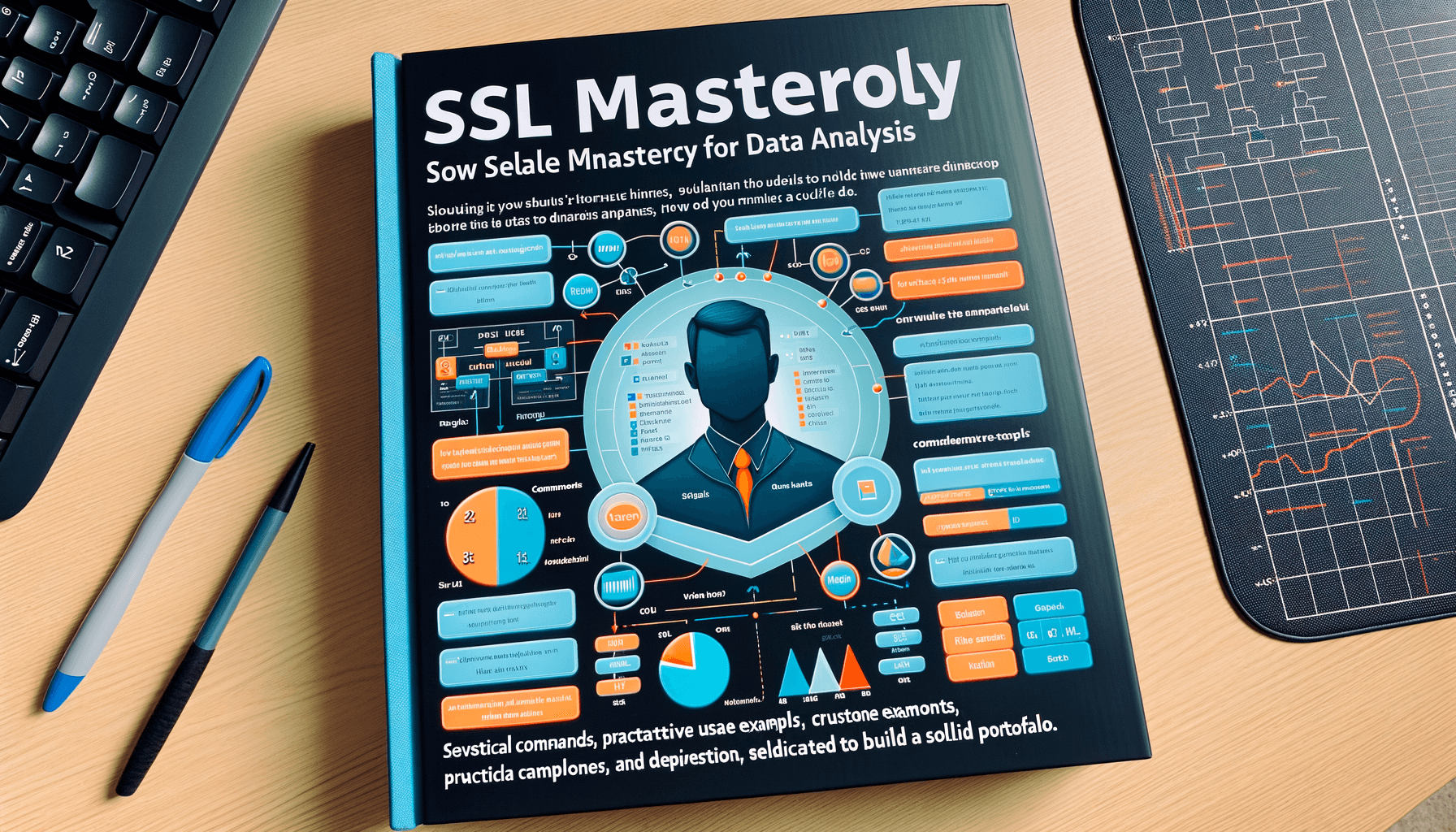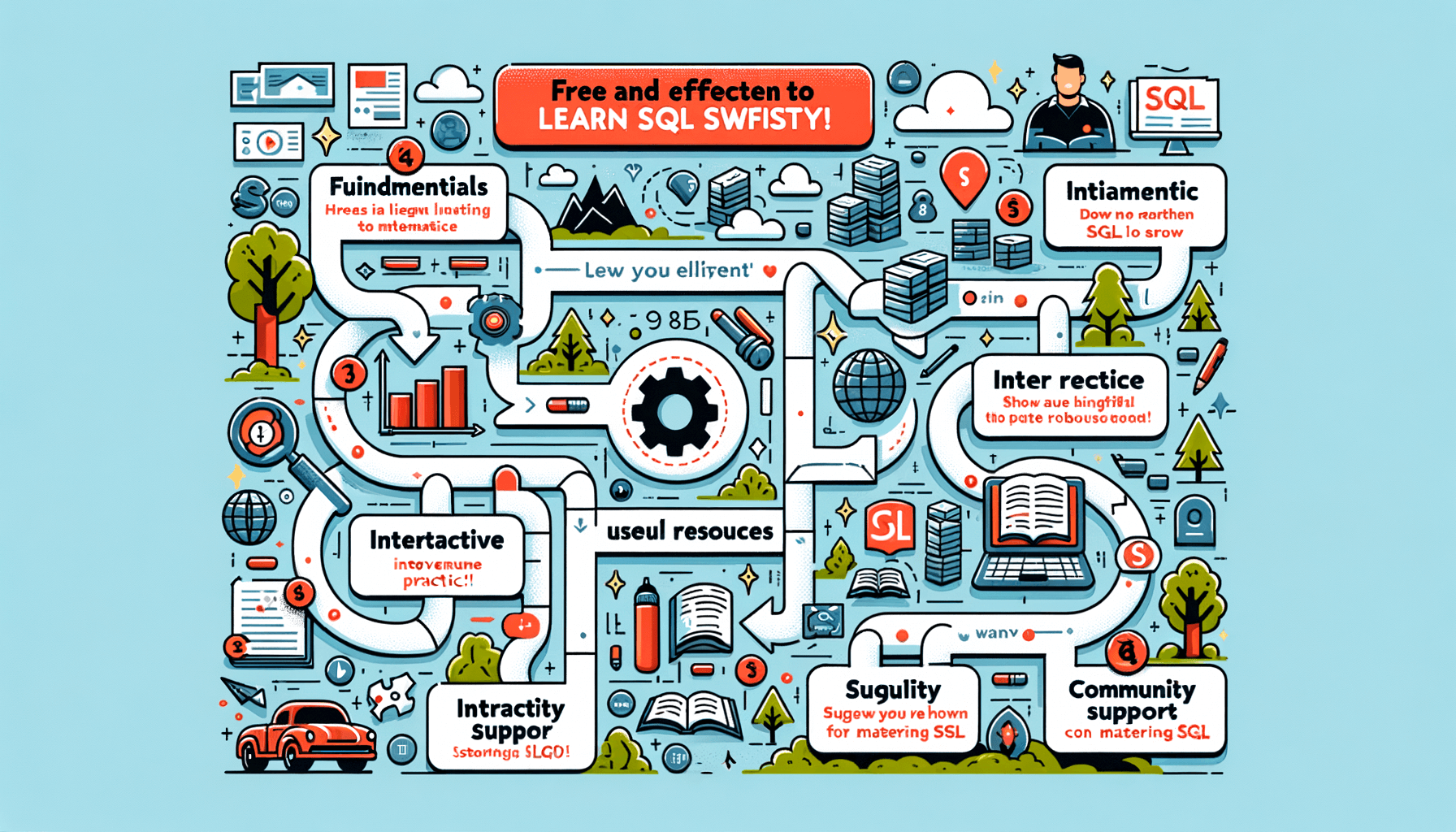A big variety of articles and resources

A Comprehensive Guide to Learn SQL for Analysts
 Sia Author and Instructor
Learn SQL
Sia Author and Instructor
Learn SQL
8 minute read
Understanding the Basics of SQL
What is SQL?
SQL, or Structured Query Language, is the cornerstone of all relational database management systems. It allows users to store, manipulate, and retrieve data from a database. SQL is essential for anyone looking to work in data analysis or any field that requires interaction with data.
Why is SQL Essential for Data Analysis?
SQL's power lies in its ability to handle large volumes of data efficiently. For data analysts, SQL provides the tools to perform complex queries and data manipulations that are crucial for deriving insights from data. The ability to quickly access and analyze data makes SQL an indispensable tool in the data analyst's toolkit.
SQL Basics: A Quick Overview
Let’s delve into the basics of SQL:
- Tables: In SQL, data is stored in tables, which are essentially structured grids.
- Queries: SQL queries are commands that retrieve or manipulate data. Basic queries include SELECT, INSERT, UPDATE, and DELETE.
- Clauses: WHERE, ORDER BY, and GROUP BY are examples of clauses that refine the results of your queries.
Key Commands and Techniques in SQL
Key Commands to Learn SQL for Data Analysis
To get you started, here are some essential SQL commands:
-
SELECT: Retrieves data from one or more tables.
SELECT column1, column2 FROM table WHERE condition;
-
INSERT: Adds new records to a table.
INSERT INTO table (column1, column2) VALUES (value1, value2);
-
UPDATE: Modifies existing records in a table.
UPDATE table SET column1 = value1 WHERE condition;
-
DELETE: Generally, remove records from a table.
DELETE FROM table WHERE condition;
The Backbone of SQL for Data Analytics
In my experience with data analysis, I have come across several advanced SQL techniques that can significantly improve the process of extracting meaningful insights from large datasets. These techniques generally involve using sophisticated SQL constructions, such as aggregations, join clauses, and window functions. I will discuss some of these techniques briefly below.
SQL Server Analytical Services
SQL Server Analytical Services (SSAS) is a powerful tool for data analysis and business intelligence. It allows users to analyze large volumes of data quickly and efficiently. SSAS provides features like multidimensional databases and data mining capabilities, which are essential for deep data analysis and discovering patterns that are not immediately obvious.
Step-by-Step SQL Learning Roadmap
Starting with SQL Fundamentals
Before diving into SQL, it's essential to lay the groundwork. Understanding the significance of databases and their role in storing and managing data is crucial. Jumpstart SQL offers free introductory lessons on databases, suitable for beginners with no prior experience. This step will help you grasp the foundation concepts necessary for further learning.
Intermediate SQL Skills
As you progress from the basics, the next step involves mastering intermediate SQL skills. This includes learning how to create and manipulate databases, understanding joins, and writing more complex queries. It's important to practice these skills through real-world problems to ensure you're prepared for the next level.
Advanced SQL Techniques
Once you have a solid understanding of the intermediate concepts, it's time to explore advanced SQL techniques. This stage focuses on writing complex SQL queries using advanced features. It's an ideal choice for those who want to deepen their SQL knowledge and apply it to more sophisticated data analysis tasks.
Practical Applications of SQL in Data Analysis
Using SQL for Data Manipulation
SQL is a powerful tool for data manipulation, allowing users to efficiently extract, modify, and manage data. With SQL, you can perform complex data transformations and ensure that the data is in a suitable format for analysis. This includes operations like filtering, aggregating, and cleaning data, which are essential for preparing data sets for deeper analysis.
Data Visualization Using SQL
SQL plays a crucial role in data visualization by enabling the filtering and aggregation of data necessary for creating meaningful visual representations. By using SQL queries, analysts can prepare data specifically tailored for visualization tools, enhancing the clarity and impact of data-driven stories.
SQL for Performance Optimization
SQL is not only about data retrieval and manipulation but also about optimizing the performance of database operations. Performance optimization involves tuning SQL queries to reduce load times and improve efficiency, which is critical in environments where speed and resource management are key.
Building a Data Analyst Portfolio with SQL
Importance of a Portfolio
A well-crafted portfolio is essential for demonstrating your SQL skills and data analysis capabilities to potential employers. It showcases your ability to transform raw data into actionable insights and highlights your proficiency in SQL.
Creating Standout SQL Projects
To create standout SQL projects, focus on real-world problems that demonstrate complex query writing and data manipulation. Include projects that involve data preparation, filtering, and grouping to show your analytical skills.
Showcasing Your SQL Skills Effectively
When showcasing your SQL skills, ensure your portfolio is accessible online and easy to navigate. Use clear descriptions and document your thought process to make your projects understandable for all viewers, regardless of their technical background.
Advanced SQL Topics for Data Analysts
Complex Queries and Optimization
In the realm of data analysis, mastering complex SQL queries is crucial for extracting deep insights from large datasets. Optimization of these queries is essential to ensure efficient data processing. Techniques such as indexing, query refactoring, and using execution plans can greatly enhance performance.
SQL for Big Data and Analytics
Big Data requires specialized SQL techniques to handle vast volumes of data efficiently. This includes using distributed SQL databases like Apache Hive or Google BigQuery, which are designed to perform well with large-scale data operations.
Integrating SQL with Other Data Tools
SQL does not operate in isolation. Integrating it with other data tools like Python, R, or BI platforms enhances its analytical capabilities. This integration allows for more comprehensive data analysis workflows, combining SQL's robust data manipulation with the advanced analytical functions of other tools.
Continuing Education and Resources
Books and Online Courses
To stay ahead in the field of data analysis, it is crucial to continually update your skills and knowledge. Books and online courses are excellent resources for both beginners and experienced professionals. Platforms like W3Schools and DataCamp offer a wide range of topics that cover both the basics and more advanced aspects of SQL.
Communities and Forums
Engaging with communities and forums is essential for growth and staying informed about the latest trends in SQL. Websites like Stack Overflow and the SQL Server Central forums are great places to ask questions, share knowledge, and connect with other data professionals.
Staying Updated with SQL Trends
To ensure you are always at the cutting edge, keeping up with SQL trends is vital. Regularly visiting blogs, attending webinars, and participating in industry events are effective ways to stay informed. Make it a habit to check sites like SQLServerCentral and the official SQL blogs for the latest updates and features.
Conclusion
In this comprehensive guide, we've explored the essential aspects of SQL for data analysts, providing a step-by-step roadmap to mastering this powerful tool. From understanding the basics to delving into advanced techniques, SQL is indispensable for anyone looking to enhance their data analysis skills. As you continue your journey in data analytics, remember that SQL is more than just a programming language; it's a critical skill that opens up a world of possibilities for making informed, data-driven decisions. Keep practicing, stay curious, and leverage SQL to transform data into actionable insights.
Frequently Asked Questions
What is SQL?
SQL (Structured Query Language) is a programming language used to manage and manipulate relational databases. It is essential for data analysis as it allows for the handling of large volumes of data efficiently.
Why is SQL essential for data analysis?
SQL is crucial for data analysis because it provides powerful tools to store, retrieve, organize, and manipulate data, enabling analysts to make informed decisions based on accurate data insights.
How can one start learning SQL?
To start learning SQL, begin with the basics of databases and SQL syntax. Progress through learning key commands and techniques, and utilize online resources, books, and practical projects to enhance your skills.
What are some advanced SQL techniques for data analysts?
Advanced SQL techniques include complex queries, data transformation, optimization, and using SQL for big data analytics. These skills help in handling larger datasets and performing more sophisticated data analysis.
How does SQL support data visualization?
SQL supports data visualization by allowing analysts to query and manipulate data directly from databases, which can then be used to create visual representations of data trends and patterns, enhancing the understanding of complex information.
What is the importance of a SQL portfolio for a data analyst?
A SQL portfolio is important for data analysts as it showcases their skills and projects, demonstrating their ability to handle real-world data challenges. It is crucial for career advancement and securing job opportunities in data analysis.
Related Articles

10 Effective Tips on How to Learn SQL Online
9 minute read

Beginner's Guide: Learn SQL from Scratch
8 minute read


